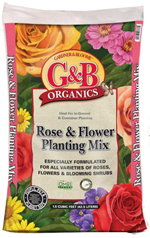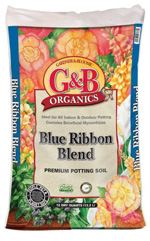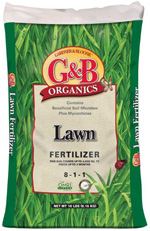|
|
 |
FEATURED QUOTE : "I appreciate the misunderstanding I have had with Nature over my perennial border. I think it is a flower garden; she thinks it is a meadow lacking grass, and tries to correct the error." |
Spring... It Brings Flowering Arbor Color |

|
|
“It's the time of tiny leaves, delicate blossoms, and long graceful catkins, the time of fragile hues, gentle rains and the glowing days that sunshine brings.” Gwen Frostic If you live where the four seasons of the year are immensely distinctive, not subtle or subdued, do you realize how lucky you are that those seasons are expressed by the changes in each tree? The summer brings breezes rustling through the leaves and shade for hot sunny days. Fall brings vivid foliage colors and a sweet fragrance embedded in your memory banks throughout time. Winter is not barren – it is the time of year that a tree exposes itself fully, demonstrating its boldness in structure and beauty all the while quietly regrouping. And then Spring, a time of nature’s rebirth or reawakening, leaves budding and flowers blooming, birds singing, and bees returning. What could be more delightful to beckon you out into your garden but a flowering tree, one of our first signs of spring? And that spring flowering tree is a delight in moderate climates as well. Trees, spring flowering or not, come in a large variety of sizes and shapes, flower types and colors. When choosing a tree for your garden these characteristics are a large part of the consideration. Do you want a patio tree (up to 20 feet) or do you have room for a larger scale tree that may reach 30 to 40 feet? Is there a leaf shape that is attractive to you? Or maybe what is important is the flower shape and color. Perhaps your garden has room for more than one tree and your considerations are bloom times and bloom colors. We have a number of suggestions for you to ponder. Keep in mind the space in your landscape, and the size of tree vs. proximity to your house or scale of your house. Patio trees allow us to look out of your window at the beauty of a tree and see the structure, foliage and flowers from the first floor or second floor of your home. A larger tree might be best placed at a distance from your viewing window to allow you to appreciate all that it has to offer from a distance, rather than placing it close to your house where your best view may be only the trunk and bark. We do not want to understate the beauty of bark, but in all likelihood, that is not all that you desire to appreciate about your tree. Patio trees – Growth to 20 feet The Orchid tree (Bauhinia) is a beautiful winter/spring flowering tree for mild winter climates. Its orchid form flowers are spectacular, with colors that range from cranberry maroon through purple and rose to pink, depending on the variety. The twin-lobed leaf is a beautiful foliage shape that adds an interesting texture to this semi-deciduous tree. There are several different varieties available, so be sure to consult us regarding the best selection for your zone. The Redbud (Cercis) is a tree valued for its heart-shaped leaves as well as its flowers and fruit. In the spring, the rosy blossoms are borne in large profusion on bare branches. Several species are available, the most common being Cercis canadensis or the Eastern Redbud and a variety, the burgundy foliage Forest Pansy. The Cercis occidentalis or Western Redbud, a native of California, Arizona and Utah, is also available over a wide growing zone region. Prunus is an enormous plant family of trees that includes not only beautiful flowering trees, but also flowering varieties that also bear edible fruits such as cherry, plum, peach, almond and many more stone fruits. For our gardens, we more often see the ornamental species which can be found in the two main categories of deciduous or evergreen. Probably the flowering plum, with its midwinter/spring pink blossoms giving way to red to purple foliage, is the most popular garden patio tree in the Prunus group. Talk to our nursery experts for the best variety for your zone. The Trumpet tree (Tabebuia) bears showy trumpet-shaped flowers in clusters that can profusely cover the tree. These are excellent for either patio trees or even container trees. Two distinct species are the Golden Trumpet tree, which is briefly deciduous and has showy golden yellow flowers with maroon stripes in the flower throat, and the Pink Trumpet tree, which is semi-evergreen. These winter/spring blooming flowers are light pink to purple - and occasionally the tree will rebloom in summer or fall. Magnolias are simply magnificent flowering plants. Open any book on trees, look up magnolia and you will find a list so long, you will wonder how to pick the best one for your garden. That is when you need to consult your local garden nurseryperson. Spring flowers can come in white, pink, red purple and even yellow. Magnolias can be either evergreen or deciduous. Probably the most common to all of us is Magnolia soulangeana or the Saucer Magnolia. However, the Southern Magnolia or Magnolia grandiflora is well known too. We could include Magnolia under the patio tree section as well. Some varieties grow to only 20 feet. Ornamental Pear (Pyrus not Prunus) is known for its profusion of early spring white flowers. In the spring, stroll into your yard and just listen - you will hear a low hum "hmmmmmmm," the sound of the bees gorging themselves on the flowers. It is simply amazing. And by the way, don't be alarmed if you are not a bee lover. These bees are busy with one task, collecting nectar and pollens. They really aren't the least bit interested in you. Jacaranda is one beautiful tree, in bloom or not. But springtime covers this tree with a lavender blue tubular flower show. There is also a white flower variety available, but not as commonly seen. The foliage is finely cut, fernlike leaves that fall in late fall/winter. These tiny leaves just disappear in the blades of your grass, so no raking! And the flower show will repeat in the form of a beautiful lavender dusting of fallen flowers under the branches of the tree. |
 |
|
Azaleas are easy to love. Their amazing flowers put on an incredible display of color every spring like clockwork, helping to herald the coming growing season. Whether in a formal or a woodland garden setting, azaleas make a great addition to any garden. When these plants are in full bloom, it's almost impossible to see the foliage underneath. For centuries, azaleas were grown only in Japanese gardens. But then native species were discovered in North America and eventually types from both countries found their way to Europe. Deciduous species (Exbury hybrids) are primarily from North America, while evergreen species (Belgian, Southern Indica, as well as Girard and Satsuki hybrids) are from Japan and Europe. Homeowners in mild climates can select almost any species of azalea for their garden. But in colder areas, Exbury hybrids and some of the newer winter-hardy hybrids should be used. They also reward gardeners with good fall colors in shades of orange and red. Many have sweetly-scented blooms. If you are short on space in your landscape, consider planting azaleas in containers to add another dimension to your garden. Azaleas grow well in evenly moist and slightly acidic soil. They perform best when the soil is amended with peat moss or an acid planting mix before planting. They also like to be fed every few months with cottonseed meal or an acid plant food. We recommend feeding from the end of the blooming season through early fall. Azaleas don't require much pruning if the proper varieties are selected for the desired mature size. If occasional pruning is needed to control size or wayward branches, prune from one month after the blooming season has ended through August. Pruning any later can remove the new blooms that are starting to set for the following spring--these can start as early as September. Whether pruned formally into shapes or left natural to blend in with the local surroundings, azaleas make a wonderful addition to any garden, with their extraordinary offering of beautiful spring flowers. |
 |
|
What You'll Need:
Step by Step:
|
 click here for a printer friendly version of this page
click here for a printer friendly version of this page |
Written content © 2004-2014 Garden Partners LLC, or respective authors. All Rights Reserved. Privacy Policy. All written content contained in this site is protected by United States copyright law and may not be reproduced, distributed, transmitted, displayed, published, or broadcast without prior written permission of Garden Partners, LLC. You may not alter or remove any trademark, copyright or other notice from copies of the content. Would you like a newsletter like this for your nursery or garden center? Please feel free to look at what we have to offer and contact us for your garden center marketing solutions. |














